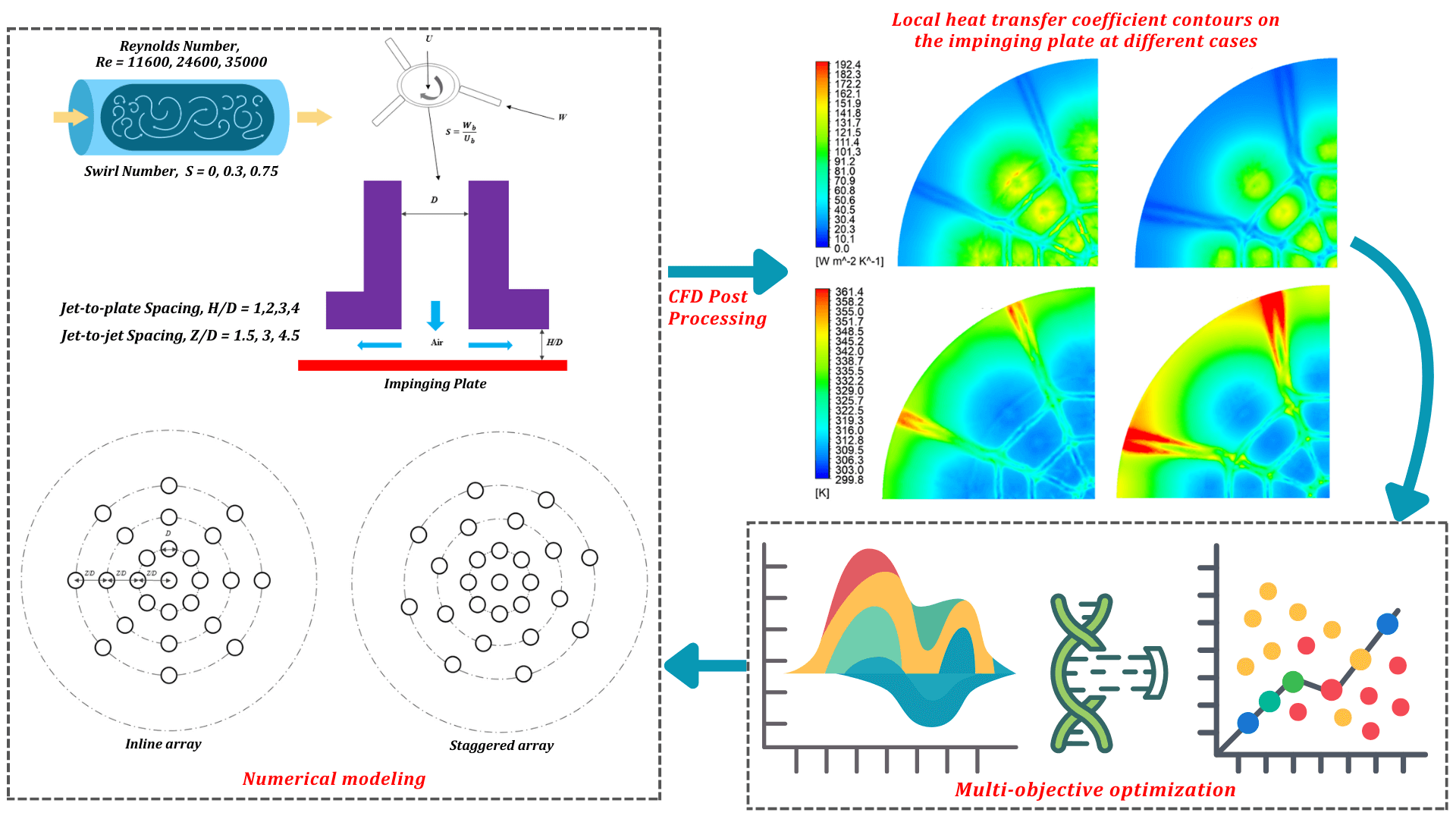 Open Access
Open Access
ARTICLE
Multi-Objective Optimization of Swirling Impinging Air Jets with Genetic Algorithm and Weighted Sum Method
1 Future Urban and Energy Lab for Sustainability (FUEL-S), Faculty of Sustainable Design Engineering (FSDE), University of Prince Edward Island, Charlottetown, PE C1A4P3, Canada
2 Department of Mechanical Engineering, Khulna University of Engineering & Technology (KUET), Khulna, 9203, Bangladesh
3 School of Engineering, Newcastle University, Newcastle Upon Tyne, NE17RU, UK
4 Dyson Institute of Engineering and Technology, Tetbury Hill, Malmesbury, SN160RP, UK
5 Department of Mechanical and System Engineering, Okayama University, Okayama, 7008530, Japan
6 Faculty of Sustainable Design Engineering (FSDE), University of Prince Edward Island, Charlottetown, PE C1A4P3, Canada
* Corresponding Author: Muhammad Ikhlaq. Email:
Frontiers in Heat and Mass Transfer 2025, 23(1), 71-94. https://doi.org/10.32604/fhmt.2024.059734
Received 15 October 2024; Accepted 09 December 2024; Issue published 26 February 2025
Abstract
Impinging jet arrays are extensively used in numerous industrial operations, including the cooling of electronics, turbine blades, and other high-heat flux systems because of their superior heat transfer capabilities. Optimizing the design and operating parameters of such systems is essential to enhance cooling efficiency and achieve uniform pressure distribution, which can lead to improved system performance and energy savings. This paper presents two multi-objective optimization methodologies for a turbulent air jet impingement cooling system. The governing equations are resolved employing the commercial computational fluid dynamics (CFD) software ANSYS Fluent v17. The study focuses on four controlling parameters: Reynolds number (Re), swirl number (S), jet-to-jet separation distance (Z/D), and impingement height (H/D). The effects of these parameters on heat transfer and impingement pressure distribution are investigated. Non-dominated Sorting Genetic Algorithm (NSGA-II) and Weighted Sum Method (WSM) are employed to optimize the controlling parameters for maximum cooling performance. The aim is to identify optimal design parameters and system configurations that enhance heat transfer efficiency while achieving a uniform impingement pressure distribution. These findings have practical implications for applications requiring efficient cooling. The optimized design achieved a 12.28% increase in convective heat transfer efficiency with a local Nusselt number of 113.05 compared to 100.69 in the reference design. Enhanced convective cooling and heat flux were observed in the optimized configuration, particularly in areas of direct jet impingement. Additionally, the optimized design maintained lower wall temperatures, demonstrating more effective thermal dissipation.Graphic Abstract

Keywords
Cite This Article
 Copyright © 2025 The Author(s). Published by Tech Science Press.
Copyright © 2025 The Author(s). Published by Tech Science Press.This work is licensed under a Creative Commons Attribution 4.0 International License , which permits unrestricted use, distribution, and reproduction in any medium, provided the original work is properly cited.


 Submit a Paper
Submit a Paper Propose a Special lssue
Propose a Special lssue View Full Text
View Full Text Download PDF
Download PDF Downloads
Downloads
 Citation Tools
Citation Tools
